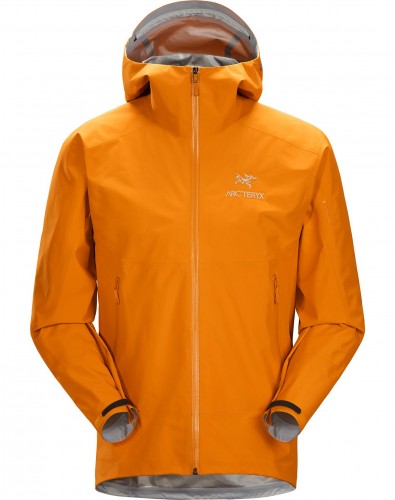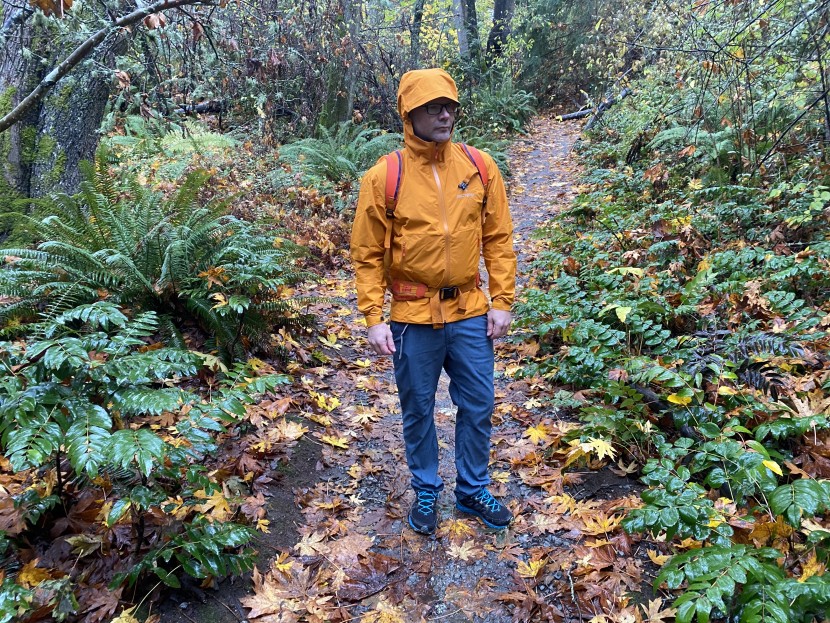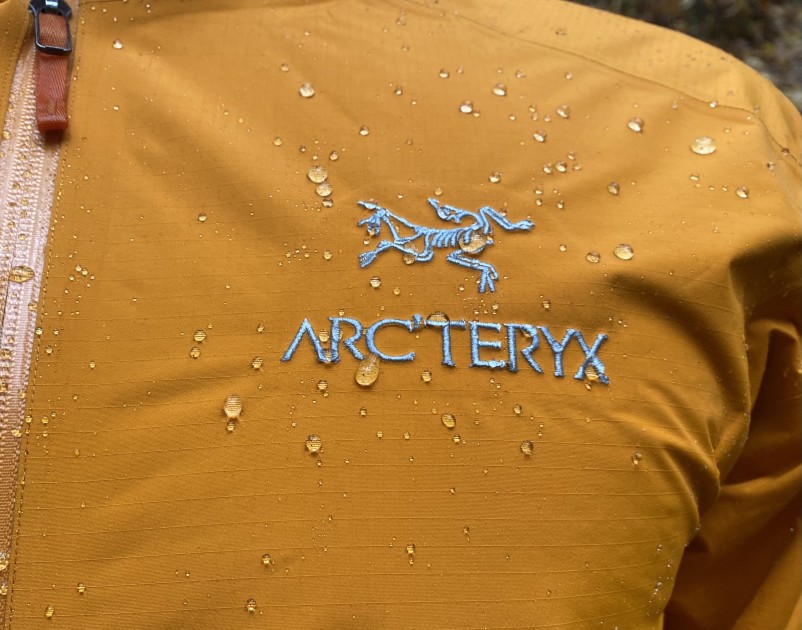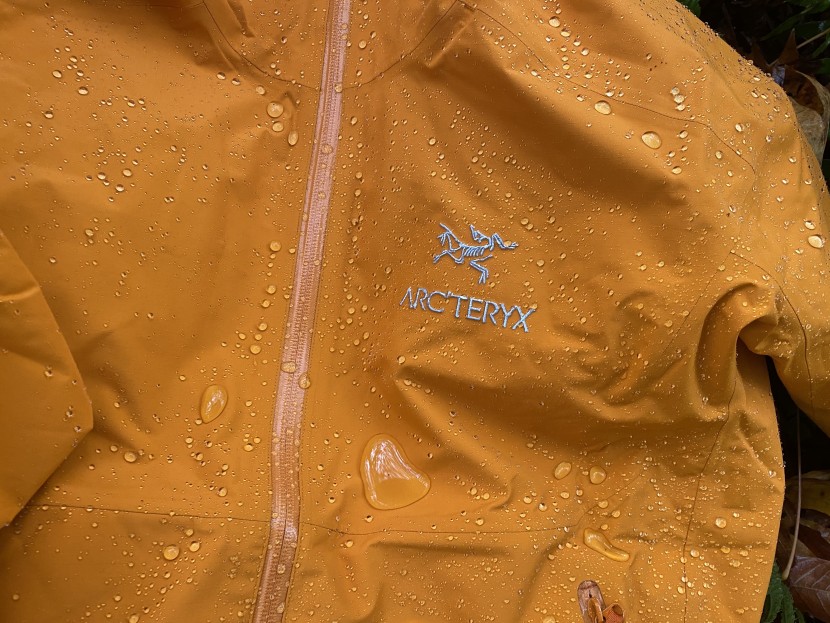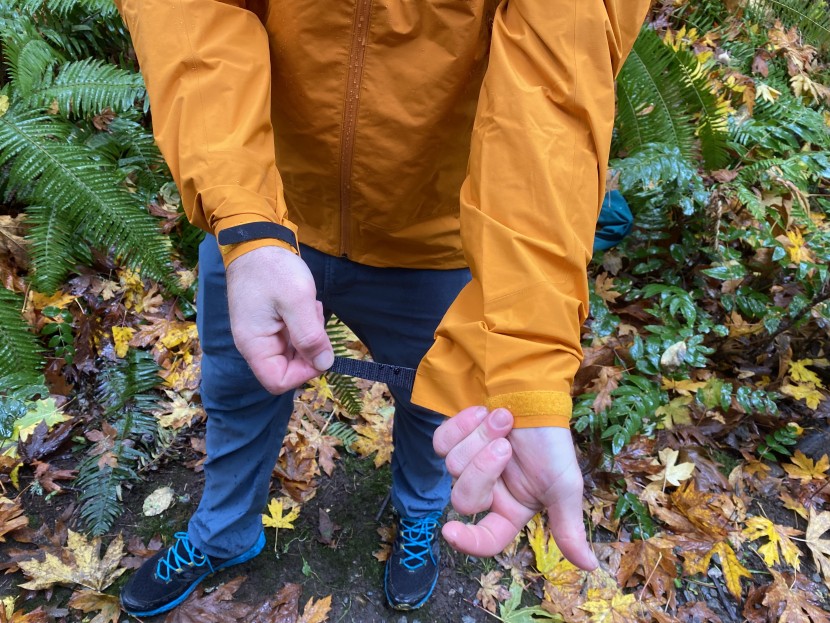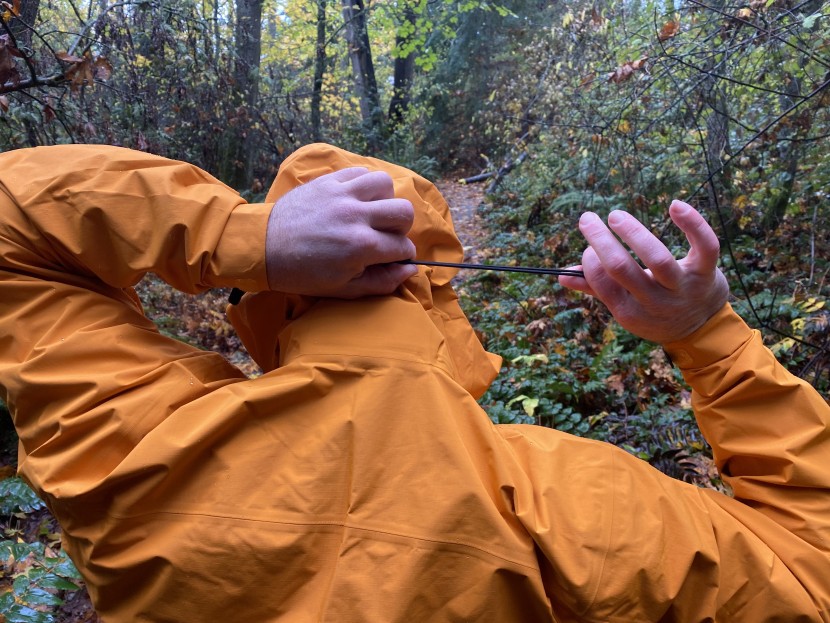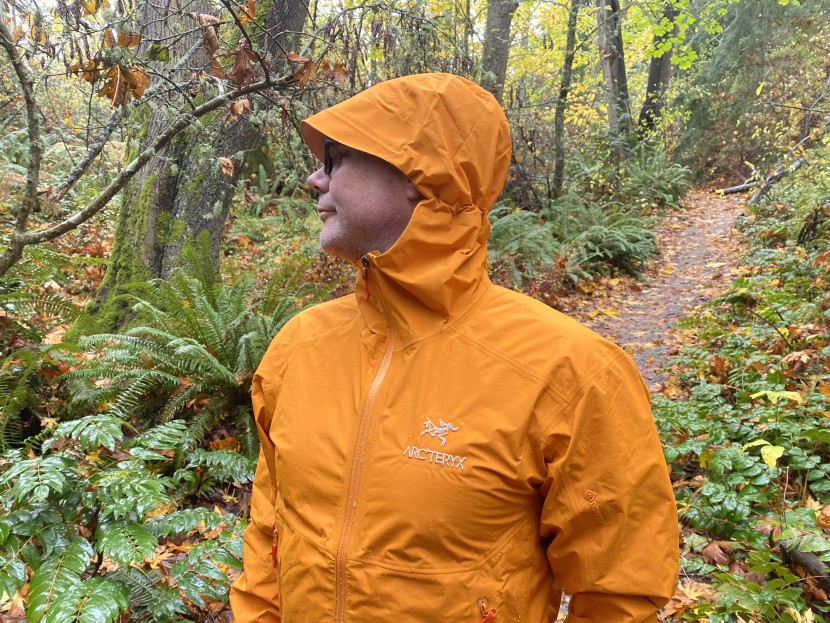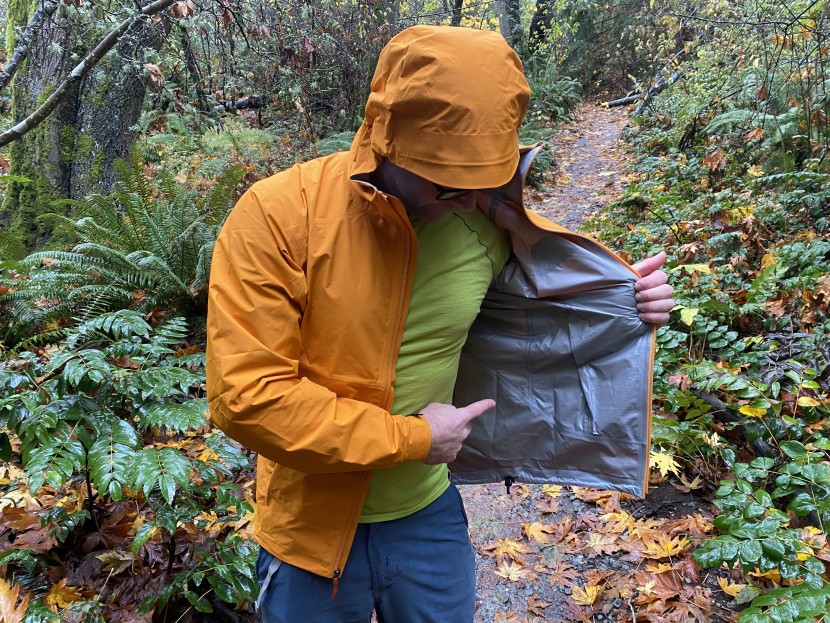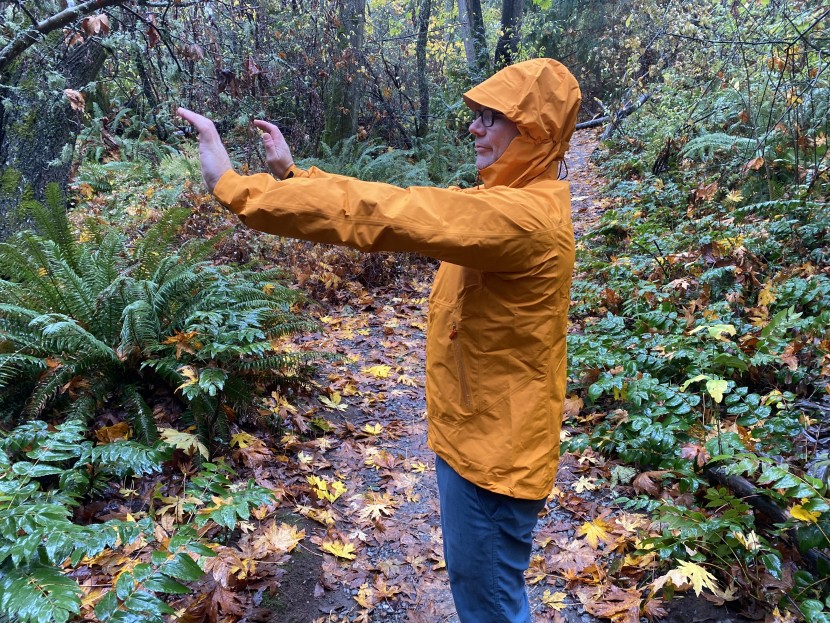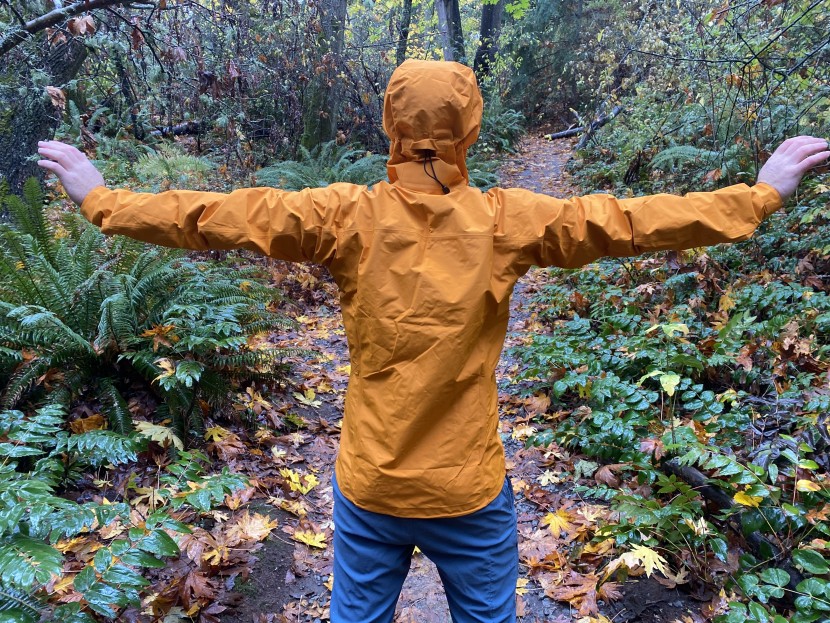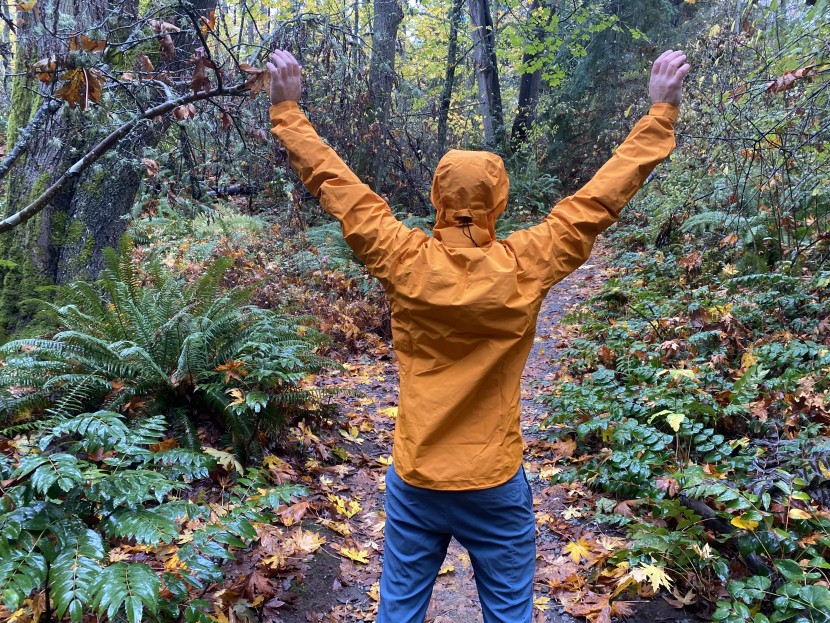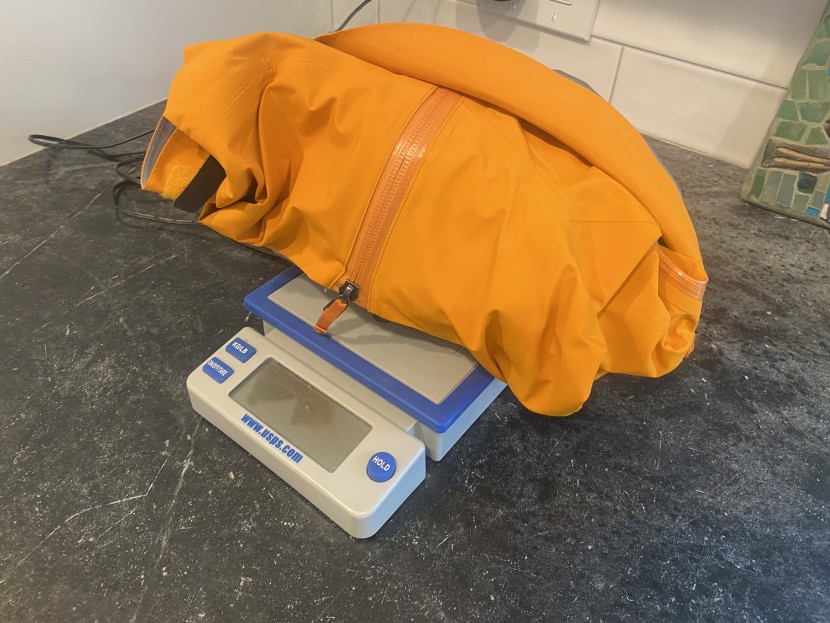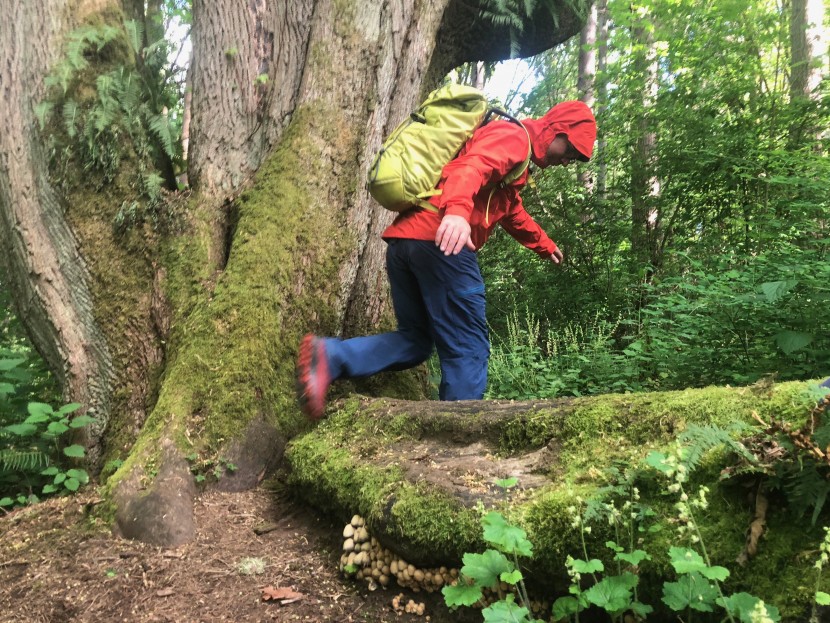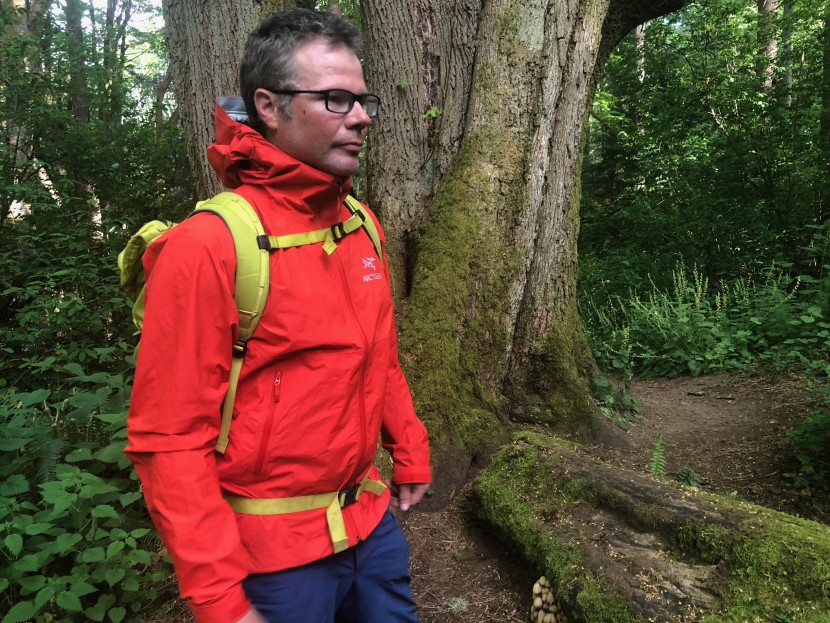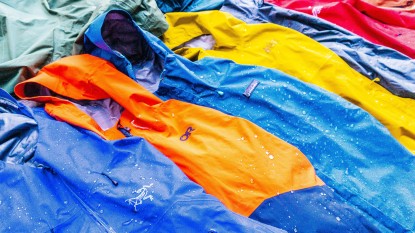Arc'teryx Zeta SL Review
Our Verdict
Our Analysis and Test Results
Striking an unmatched balance of storm protection, breathability, and weight; no model can match it for its high level of across-the-board performance. No model in our fleet performs as well overall or does as many things as well as the Zeta SL, which is what makes it stand out as the cream of the crop and our overall recommendation.
Water Resistance
The Zeta uses Gore's newest lightweight waterproof material, Paclite Plus, which improves and replaces the previous Gore-Tex with Paclite technology material.
This newest Gore-Tex Paclite Plus is built with a true 2-layer design, which isn't like older 2-layer garments that required a loose hanging mesh liner. This model's two-layer construction features an exterior face fabric that is physically bonded to the waterproof membrane and an innermost chemical coating; this protect the membrane from the sweat and oil of your skin. It should be noted that this is different than the physical (still commonly sprayed on) coatings of many 2.5-layer products. This true 2-layer design makes the garment more breathable, as the moisture has to travel through less fabric and is lighter in weight due to the decrease in the material.
After extensive testing, the new Zeta SL is one of the most stormworthy models we tested. It provides top-tier weather protection and a long-lasting DWR that holds up longer than any other model in our review. In our direct side-by-side comparisons, it excels in our shower and garden hose tests, keeping us comfortable and dry. During real-world testing, including two dozen days of backpacking, climbing, and ski touring over a very damp Fall in the Pacific Northwest, the Zeta SL exceeded our expectations and is one of the most weather-resistant products we tested.
The Zeta SL offers an array of well-designed features, which rank highly for their functionality in keeping our reviewers dry. We appreciated its sleek, low-profile Velcro wrist closures, which minimized the amount of water that ran down our arms if we were using our hands were above our head. The main front zipper is watertight and sports a minimal but effective internal storm flap that keeps the water out in even the wettest of storms. The Durable Water Repellency (DWR) holds up incredibly well and is one of the best in our fleet.
Hood Design
The Zeta SL features one of the best overall hood designs with a nearly unmatched level of peripheral vision; it does function with a helmet, but the fit is right. Our testers loved its deep hood (which provides more protection), and an extremely functional brim that actually keeps the rain off the front of your face. Our review team found the hood design is easy and functional when cinching down. Unlike some options that feature three cinch points (one in the back and two in the front) that need to all be tightened independently, this model cinches all three places simultaneously from the same rear cinch.
This basic but incredibly effective hood design performed exceptionally well and was easy to tighten with one hand or two to loosen. The Zeta's Hood easily accommodates most headwear and head sizes hugging our heads from beanies to baseball caps — or nothing at all.
The hood is a little tight to fit over most climbing or bike helmets. It can fit but depending on the model, it doesn't lend itself to a high level of comfort. If you have a more voluminous helmet, consider wearing this model's low-profile design underneath the helmet — instead of outside.
Breathability and Venting
The Zeta SL's Paclite Plus material is one of the more breathable in the fleet. Gore markets their 3-layer Gore-Tex Active to be slightly more breathable. In our tests, we didn't find otherwise but found Gore-Tex PacLite to be comparable. As a result, a slight edge could be given to Gore-Active pieces; for our testers — and for most people — it is pretty difficult to distinguish any differences.
Directly comparing the Zeta with its Gore Paclite Plus fabric to air-permeable models isn't as cut and dry as it sounds. Air-permeable models have a lower but more static level of breathability. In contrast, this model, as well as other models that feature any variety of Gore-Tex, can have higher and lower levels of breathability depending on the level of activity of the user and environmental factors (like the temperature outside). This level fluctuates more depending on how much internal heat build-up there is relative to the air temperature and to a lesser extent relative humidity (which for most people means generally higher when you are wearing a rain jacket). When we were working hard (such as hiking), both Gore Paclite Plus and Gore Active breathe better than any model featuring an air-permeable fabric, such as the Outdoor Research Microgravity and the Rab Kinetic Plus (the two best). However, these models performed better if it was exceptionally hot and humid out, or once we had cooled off (say, while setting up camp).
One potential drawback for some users is the Zeta SL doesn't feature any additional ventilation to dump heat and sweat. Ventilation isn't as crucial as breathability; for example, if it's pouring rain, but you happen to find yourself on an overgrown trail, you won't be able to open your vents up much (if at all) because water will start coming in through the vents. All jackets have breathability maximums that can easily be exceeded if you are overdressed.
Comfort and Mobility
Our testers loved the feel of the internal fabric of the Zeta even more so than the REI XeroDry, which is also constructed with Gore-tex Paclite Plus. It was a significantly less clammy and sticky feeling than the majority of competitors and felt great directly against our skin, and feels nice even when we only had a t-shirt on under it.
The Zeta SL boasts some of the better overall mobility and range of motion of any model we tested. All of our testers loved this jacket's slightly longer arm length and nicely designed, articulated sleeves. Even folks who don't have long arms benefitted from this combination of features and design, as the ends of the sleeves didn't pull back, even when reaching directly above our heads. While the sleeves were slightly longer than average, all of our testers agreed they never felt bulky or too long, and most folks commented that this aspect made the jacket more comfortable overall.
The Zeta SL is a relatively minimalist jacket that offers several small nods to comfort, like a micro-fleece lining on the top of the inside of the zipper, which protects the wearer's chin but is otherwise a pretty simple design. One comfort and function-oriented design is a similar price of fabric that is found on the chin is also on the back of the neck. This extra material not only adds comfort but it increases longevity by absorbing oil and sweat, reducing the chance of the interior fabric delaminating. We love the slightly more athletic fit, which still allows for effective layering — without bunching in the underarm areas.
Pocket Design
The pockets on this model are slightly elevated so that they remain accessible under a pack or while wearing a harness and their zippers don't pinch while wearing a backpack. While slightly elevated, they weren't so high that they still didn't provide a pleasant place to keep our hands warm and tucked away. It is this combination of features that makes Zeta's slightly elevated, function-focused pockets among our review team's favorite.
Weight
The SL in Zeta SL stands for Super Light; at 11.3 ounces, the Zeta SL is on the lighter end of the spectrum and the lightest Gore-Tex model in our review.
It's significantly lighter than most full-featured hardshells, yet it doesn't yield much in the way of performance or overall weather protection to most of these heavier models.
Arc'teryx reduces the weight of this model in several ways: there's no additional ventilation besides simply unzipping the primary front zipper, this saves a least a few ounces of materials of zippers and stitching. Arc'teryx uses a 13 mm seam which is the narrowest in our review. This model uses watertight zippers, enabling them to minimize the size of the storm flap further saving weight. Even the Velcro wrist straps are low profile, also minimizing weight without giving up much, if anything in that way of functionality. While not the absolute lightest model, for most users this model is plenty light enough to satisfy the majority of outdoor enthusiasts.
Durability
For an 11-ounce jacket, the Zeta is surprisingly durable; it provides respectable resistance to tearing or scuffing and is notably tougher than most models of similar or less weight. The longevity of its DWR also impressed our review team; even after a full winter and spring, it's still going strong. Besides the Zeta SL's outer tight-knit exterior face fabric, it offers several features that increase this model's overall durability. There aren't any seams on the shoulders, which is typically the first place seam tape will pull back, due to the pressure of shoulder straps and abrasion. Additionally, the seam tape used on this product is the thinnest in the review; this not only saves weight but makes it less prone to peeling after extended use.
The inside of the chin area has an additional layer of nylon to combat the wearer's sweat from clogging the pores of the membrane, which can cause it to break down or delaminate prematurely. The Zeta is one of the most robust jackets we tested, which is particularly impressive, considering it weighs only 11.3 ounces. The Outdoor Research Foray and Marmot Minimalist edged out the Zeta in the durability metric (mostly due to their slightly thicker face fabric), but both of these models are heavier and we didn't find the Zeta far less durable.
Packed Size
The Zeta compresses down very small considering the amount of weather protection this model provides. Overall it's roughly 25 percent more packable than most three-layer Gore-Tex jackets and offers nearly all the performance benefits.
This model is one of the few options that doesn't feature some sort of “stuff pocket” to help compress it. While this was hardly a big deal as we just stuff it into its own hood or down the side of our pack, it is one of the few features that most of the jackets in our review have.
It compresses smaller than the Outdoor Research Foray and The North Face Dryzzle, both of which use Gore-tex Paclite fabric. Even compared to the 2.5 layer Marmot Precip, the Zeta packs down more compactly. The title for the most packable jackets goes to the Outdoor Research Helium Rain and the Patagonia Storm 10 — both of which were roughly 50% the volume of the Zeta but also provide less stormworthiness, are less versatile, and are less durable.
Value
With its price tag, it's easy to find a less expensive raincoat. However, the Zeta provides good value for the cost. It's arguably more versatile and lighter than many jackets that fall in the 400-700 dollar price range. While a hardshell can offer a higher level of durability, features, or winter-related applications, the Zeta is an exceptional jacket — and our first pick — for hikers, backpackers, climbers, and mountaineers. It's tough, storm-resistant, and boasts a superior weight and packed volume.
From a value standpoint, several other Gore-Tex Paclite models cost less and score similarly in our tests. In some cases, they might even offer a particular advantage, like the Outdoor Research Foray, which provides better ventilation, or the Marmot Minimalist, which is slightly more durable, though both are also 50 percent heavier and less packable. So while they have a few advantages, they aren't better in as many categories as the Zeta. Overall you can buy less expensive models; two of the best deals on Gore-Tex jackets are the Marmot Minimalist and the REI XeroDry, but even those can't match the all-around performance that you'll find with the Zeta SL.
Conclusion
The Arc'teryx Zeta SL is a sweet, versatile do-everything three-season jacket that provides the best overall balance of performance and versatility. No model can match the Zeta's across-the-board performance, as it scores at the top or near the top in every comparison category. While it is on the more expensive side, its performance attributes and versatility easily justify the cost — which isn't that much more than a lot of its direct competition.
Not many models can easily disappear in our pack for a day hike or afternoon trail run, but still keep you dry on a stormy week-long backpacking trip, when it's supposed to rain every day. This model's top-tier materials and overall design will keep you comfortable and dry, regardless of the conditions, and its mobility and freedom of movement mean you won't be bothered when wearing it. If we could only have one rain jacket for a huge wide range of applications, this would be it.

